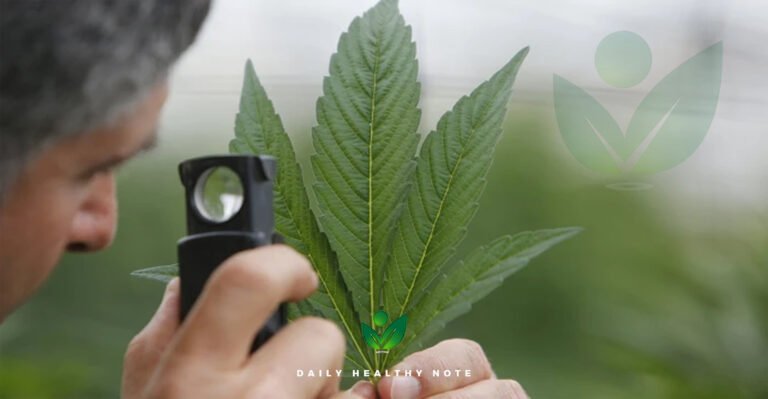Knowledge of the link between weed, depression and other mental health markers has expanded rapidly in recent years.
There was a panic over pot in the 1930s.
When the movie Reefer Madness came out in 1936, the criminalization of marijuana was already in the works. The film fell into a popular 1930s genre called “exploitation movie.” Described by IMDB as a “cautionary tale,” the film portrays a group of innocent teens who become addicted to “reefer cigarettes,” with the blame falling squarely on three marijuana dealers. Under the influence, the teens hit and kill a pedestrian with a car, shoot and kill a fellow teen and beat a man to death with a stick. In the end (spoiler alert!), the teens jump out of a window and die.
Nearly 100 years later, the story surrounding cannabis in the U.S. has evolved, to say the least. As more and more research is published about marijuana, there’s mounting evidence that rather than being a menace to society, cannabis — which is banned in most countries — has numerous potential benefits in the physical, neurological and psychiatric realms.
Some Marijuana History
A year after Reefer Madness came out, the Marihuana Tax Act of 1937 was passed, essentially banning its recreational use. Three decades later, as part of the Controlled Substances Act of 1970, the federal government classified marijuana as a substance with “no acceptable medical use.” By the early ’80s, the anti-drug campaign, “Just Say No,” had consumed the American consciousness. Research suggests the number of Americans who saw drug abuse as the nation’s “number one problem” grew by about 60 percent between 1980 and 1989.
Attitudes started to change in the beginning of the 21st century. Marijuana began to earn mainstream acceptance. A rapidly growing number of Americans have shifted from worries about addiction and categorizing weed as a gateway drug to acceptance across the board, or at least openness to its medical benefits. In fact, as of last year, less than 1 in 10 U.S. adults (8 percent) believed that marijuana should be illegal for all types of use, according to a 2021 survey released by Pew Research. That same surveyed showed that 91 percent of U.S. adults say the substance should be legal for either medical use, recreational use, or both.
Link To Mental Health
According to Harvard Health, medical marijuana’s most common use in the U.S. is for pain control, including nerve-based pain from conditions such as multiple sclerosis. Research shows it can be helpful in treating nausea and vomiting, a side effect of chemotherapy, and forms of epilepsy.
What seems to be lacking in the research annals, at least until very recently, are studies that focus on the relationship between mental health and cannabis use. In 2017, the Alcohol and Drug Abuse Institute at at the University of Washington published a paper called “Effects of Marijuana on Mental Health: Depression,” raising attention to the lack of scientific studies on the mental health connection.
“Mental health conditions figure prominently among the reasons given for medical marijuana use, yet there is a dearth of rigorous, experimentally controlled studies examining the effects of marijuana on mental health conditions,” wrote the paper’s authors. There are early studies that suggest cannabis use increases the risk for depression and vice-versa.
But what is still missing today, according to a 2021 study in Frontiers in Psychology, is a systematic study of the potential positive side effects of cannabis use, including decreased depression and anxiety. The researchers of this study aimed to synthesize all the published research linking depression and cannabis, noting that it is “pressing to evaluate the consequences of the subsequent increased consumption.” The work becomes increasingly important as legalization of medical marijuana increases in the U.S. As of July, it was legal in 38 states and Washington D.C.
Emerging Studies
The Mayo Clinic suggests there is a link between pain and depression — with both of them potentially leading to the other. Now, a spate of new research suggests that cannabis may pose an alternative to recommended antidepressants as a reliever of pain caused by anxiety and depression.
One 2018 study in Journal of Affective Disorders, which the authors called the first of its kind, suggests smoking cannabis can significantly reduce short-term levels of depression, anxiety and stress. The study was considered unique because researchers looked at the effects of inhaled cannabis used by participants in their own homes, rather than THC pills administered a lab.
A 2020 study published in the Yale Journal of Biology and Medicine suggests that the majority of its study participants saw at least a short-term antidepressant effect from cannabis use. Study authors also noted that theirs was the largest study published to date measuring how different types of cannabis flower (the most prevalent type of product used in the U.S.), impacts depression-related symptoms in real time.
More recently, a study published in Frontiers in Psychiatry in 2021 saw a correlation between cannabis use and lower self-reported depression in a trial. Users also reported better sleep, better quality of life and less pain. Participants who began using cannabis products as part of the study reported a 25 percent reduction in depression symptoms.
Participants that never started using cannabis during the study showed almost no change in symptoms, according to lead author of the study Erin Martin, a Ph.D. candidate in the Department of Neuroscience at the Medical University of South Carolina. “This is significant because ‘initiators’ (as we call them in the paper) went from meeting criteria for ‘moderate’ depression to below the cutoff for a clinical depression diagnosis,” Martin says, adding that further placebo-controlled research on the psychiatric utility of cannabis products needs to be done to confirm the team’s findings.
The Significance Of The Research
Statistics compiled by the National Institutes of Mental Health (NIMH) suggest that more than 21 million American adults — about 8.4 percent of the adult population in the U.S. — have suffered from at least one major depressive episode.
NIMH defines a major depressive episode as “a period of at least two weeks when a person experienced a depressed mood or loss of interest or pleasure in daily activities, and had a majority of specified symptoms, such as problems with sleep, eating, energy, concentration, or self-worth.”
The prevalence of major depressive episodes was highest among U.S. adults aged 18 to 25. In addition, the study found that 10.5 percent of the female population and 6.2 percent of the male population suffered from major depressive episodes.
Depression is a global phenomenon, too. According to the World Health Organization, 280 million people suffer from depression. That’s 3.8 percent of the world’s population — ranking depression among the most debilitating medical conditions in the world.
This reality about depression creates an urgency for more treatment options. While Martin notes that commonly-prescribed antidepressants work well for a lot of people, she emphasizes that “they still don’t work for everyone, and many can have debilitating side effects.” This dilemma compels her to continue studying the relationship between depression and cannabis: “If there’s a possibility that cannabis can help people in the ways they need without causing too much harm, that’s definitely something worth exploring.”











